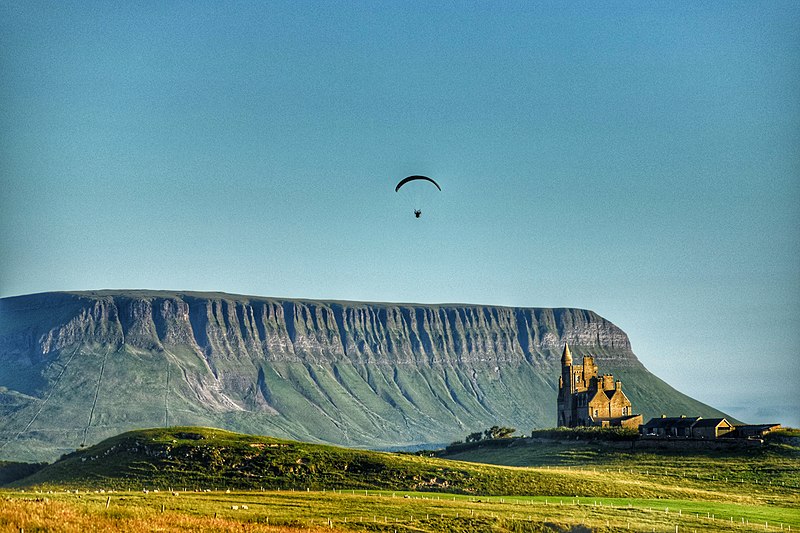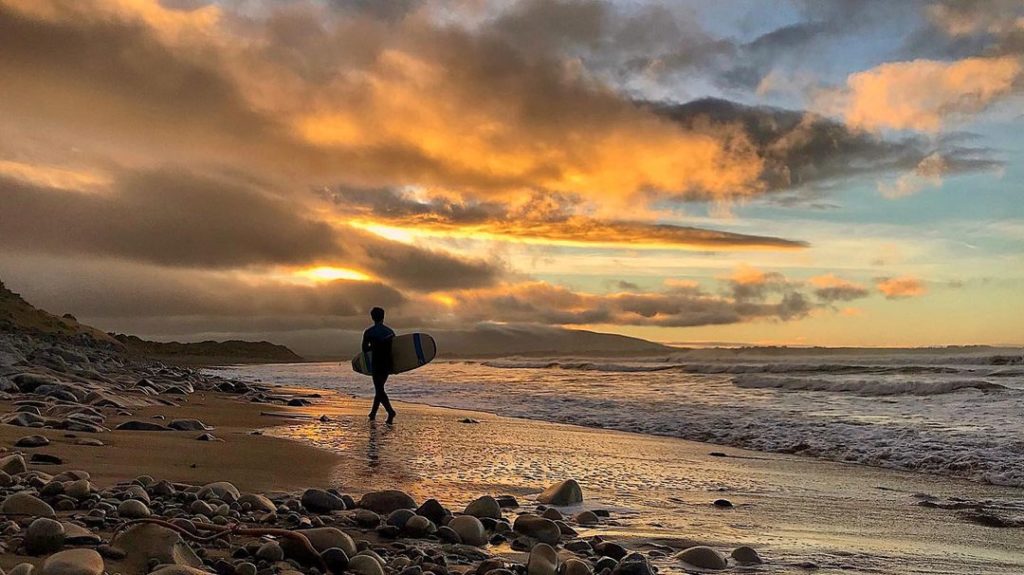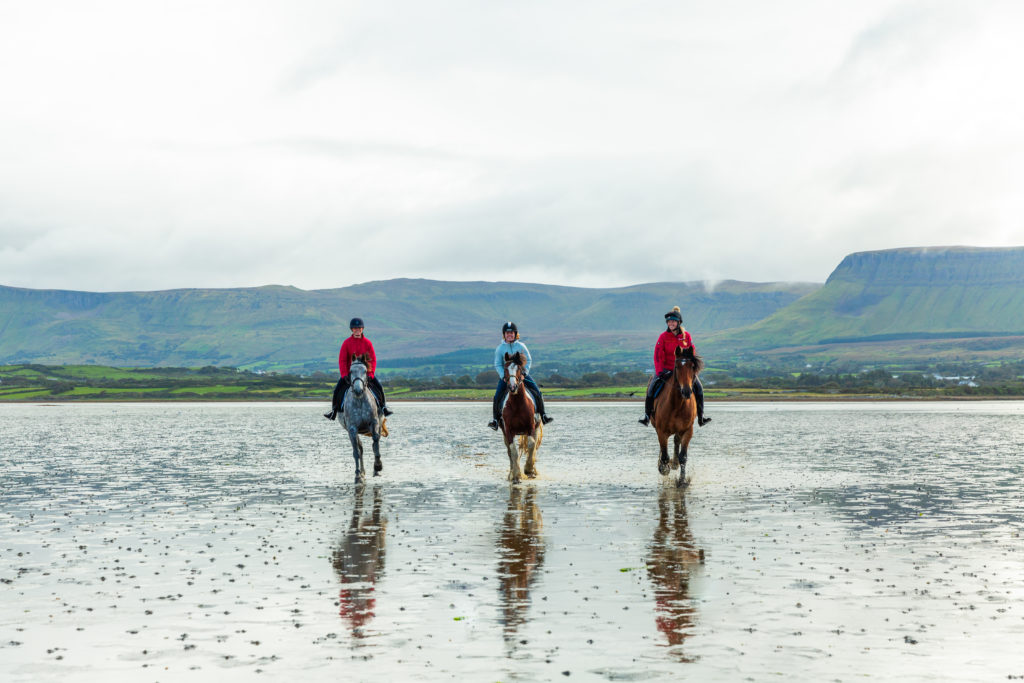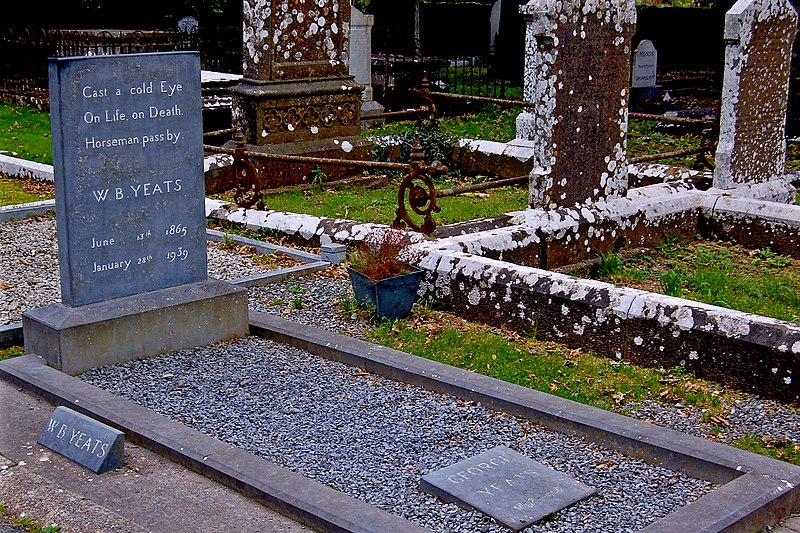OVER the next fortnight Sligo will host the Cairde Arts Festival (July 6-13) with a wide array of events including visual art, photography, music, theatre, literature, poetry, circus, and dance — indeed, all the nooks and crannies of Irish culture. Following on from that, the Yeats Summer School, now celebrating its 65th iteration, runs July 11-19. Talks by noted authors such as Fergal Keane (BBC) are interspersed with boat trips on The Lake Isle of Innisfree and a guided tour up Knocknaree.
In autumn there’s the Sligo International Music Festival, featuring the likes of the Paul Brady Trio, The Felice Brothers and many more.
But you don’t need to be a festival-goer to appreciate Sligo. Situated at the mouth of the Garavogue River, Sligo town is the handsome hilly capital of the county, nowadays with a reputation of being a place where the traditional and the bohemian have combined into an attractive mix. The newly redeveloped Queen Maeve Square, right on the banks of the Garavogue, is a lovely place to watch Connacht life dander by.
The south of the county is a paradise for walkers, climbers and general view-addicts — in this corner of the county a largely rural way of life manages to hang on despite the encroachments of the modern world.
And of course there is a well-trodden tourist trail dedicated to William Butler Yeats — whose name even sounds like a line of poetry. Benbulben (sometimes Ben Bulben), Lough Gill (aka the Lake Isle of Innisfree), and of course Drumcliff Cemetery, WB Yeats’ last resting place, are essential pilgrimages for poetry lovers.
 Benbulben, (image Subhrambar on WIkimedia Commons)
Benbulben, (image Subhrambar on WIkimedia Commons)Sligo’s summits
If it's mountains you're after, you’ll scarcely do better than Sligo. Benbulben is the most famous outcrop, but there's also the Dartry Mountains, the Curlew Mountains, the Ox Mountains (Slieve Gamph) and the Bricklieve Mountains surrounding and bisecting the county.
The Bricklieves rise in the south of the county and are a small, but exciting range - terrifyingly steep tracks snake past grey limestone cliffs and onto one of the most beautiful bogland sceneries in Ireland, the great plains of Tubbercurry and Ballymote.
The Slieve Gamh, or Ox Mountains, run east-west across the county parallel with the shore, with consequent spectacular views of the ever-snarling Atlantic. They are believed to contain the oldest rocks in the county, perhaps in Ireland — many hundreds of millions of years old, with huge grey outcrops certainly looking ancient and weather-worn,
The Curlew Mountains offer breathtaking views of the county to the north, reputedly the inspiration for Thomas Moore to pen the words of "The valley lay smiling before me"; simple, but beautiful lines.
A more gentle stroll
IF YOU haven't packed the crampons and ropes in your carry-on baggage, you can instead take the gentler Historical Trail, a 5 km walking route from Ballyfarnon through Highwood, Castlebaldwin, Boyle, Knockvicar and Keadew. Only one difficult part presents itself this way: a short and steep ascent beyond Boyle, but no problem really.
The area is also home to one of Ireland's great complexes of chambered cairns. The oldest site is found at Carrowmore, and from here a great chain of ancient sites stretches eastward, gaining in size and complexity. Carrowmore Megalithic Cemetery boasts 45 standing stones, all arranged under the stern gaze of the mother of all megalithic standing stones — Medb's Cairn, on top of Knocknarea. Medb, as you will know, was the ruler of all Connacht some millennia ago.
It seems that humans lived in this neck of the woods for perhaps 7000 years, and built the earliest tombs yet identified in western Europe.
These early Sligo people evidently enjoyed a good view as much as we do, building their cairns, dolmens and sepulchral chambers on Sligo's dramatic Atlantic seaboard. Who knows, these Neilithis, er, dudes, may even had some rudimentary surfing.
 A surfer on Strandhill beach (Tourism Ireland)
A surfer on Strandhill beach (Tourism Ireland)From turf to surf
SLIGO has some idyllic seaside towns. Easky, a renowned centre for surf boarding, stands on the famous Killala Bay - where French ships anchored in 1798 in support of the Republican movement. Strandhill is also a busy surfing centre.
The National Surf Centre in Strandhill boasts modern changing facilities and toilets along with a beautiful meeting space with panoramic views over the Atlantic Ocean. Surf lessons can be booked through the centre and lessons can be tailored for all abilities – from children right through to elite surfers. They will provide you with everything needed for a day in the surfm from board to wetsuit, plus more than a few tips on how to spot barrel waves, say ‘cowabunga!’ properly, and generally up you surf chat.
Paddle boarding in the sheltered bays is a more restful, horse riding on Sligo’s beaches is an absolute must, and whale and dolphin watching off the county’s headlands are all part of Sligo’s package.
 Horse Riding on Streedagh strand, with Benbulben in the background (Tourism Ireland)
Horse Riding on Streedagh strand, with Benbulben in the background (Tourism Ireland)About the bay
INISHCRONE, a busy little seaside village, lies on Killala Bay. From here you can head back towards Tobercurry and drive through the Ox Mountains, past the impossibly picturesque Lough Talt — look out for the babbling Whooper swans gliding through the rushes.
Then you can drive south of Skreen and up part of Knockalongy, the highest point of Slieve Glamph. The road finishes at Ladies’ Brae, a panoramic viewpoint with the wide sweep of Sligo Bay and the Dartry Mountains on show.
The new National Mountain Bike Centre in Coolaney is an outstanding facility featuring a network of purpose-built mountain bike trails with fantastic views over the Atlantic Ocean, Strandhill and Coolaney village. There are routes suited for every ability range from beginners and also expert level bikers.
 Drumcliff Cemetery (Wikimdia Commons)
Drumcliff Cemetery (Wikimdia Commons)Musical Sligo
COUNTY Sligo is famous for its music – and we’re not just talking Westlife. The south of the county is particularly noted for its flute tradition - and the band Dervish.
Sligo was also the birthplace of fiddler Michael Coleman, a man many would claim was instrumental in saving Irish music from a slow slide towards, if not extinction, then very much a minority interest in the early part of the 20th century. But Michael helped stop that.
The Sligo style of fiddling also has claims to having spread across the country and is largely speaking what passes as ‘Irish’ fiddle music these days.
You can pay your respects to Michael in the village of Killavil, in an area of south Sligo which has been famous for its traditional music for almost 200 years.
At the Michael Coleman Centre in Gurteen you can learn firsthand about his music, his life, and the crucial part he played in Irish music.
For a guaranteed good session in Sligo Town head for J. McLaughlin's Bar which has traditional sessions every night of the week. Shoot The Crows on Castle Street has frequent sessions, while Furey’s Sheela na Gig is traditional band Dervish’s local.
Finish at the Inish
From the town of Grange you can take a boat four miles into Sligo Bay, and cruise in the area of the island of Inishmurray — which is currently closed to visitors. Uninhabited, it covers 228 acres, and is home to the remains of an early Irish monastic settlement, probably dating back to around 500A. Daryl Ewing (sligoboatcharters.com) will take you out on a wonderful bota trip.
The local population peaked at just over 100 in the 1880s but the last residents moved out to the mainland on 12 November 1948. That’s around 1500 years of holy water being poured into the stone font.
Where to stay
The Glasshouse
Swan Point, Sligo,
www.theglasshouse.ie
If you want an ambient place to stay, try the Glasshouse Hotel within an easy stroll of Sligo's main O' Connell Street. Towering over the banks of the Garavogue river, this design boutique hotel features quirkiness, colour, pop art, cutting-edge design and architecture.
The Park Hotel and Leisure Club
Pearse Rd, Sligo
www.sligoparkhotel.com
One of the best regional hotels in Ireland with excellent spa facilities – including jacuzzi and swimming pool, against a background of landscaped gardens and mature trees.
The Radisson Blu Hotel & Spa
Rosses Point
www.radissonhotels.com
Surrounded by the grandeur of the countryside of Rosses Point, the Radisson Blu Hotel & Spa, Sligo offers views of Sligo Bay and the neighbouring mountains as part of their deal
Getting there
- Access to Sligo is easy now with a daily flight from Heathrow into Ireland West Airport at Knock – located just 45 minutes from Sligo town. The regular bus operates to Sligo town and car hire options are easy too - www.irelandwestairport.com/
For further information
www.sligo.ie
Sligo comes to London
On Wednesday, July 10 at the Bloomsbury Hotel, London. Sligo Business Network London will hold their latest event in partnership with Sligo County Council and Sligo Chamber of Commerce for an evening of networking, informing and friendship. The theme is tourism and hospitality
All are welcome
Contact
Or book online
http://www.eventbrite.com/e/sligo-business-network-goes-to-london-tickets-925459071997

